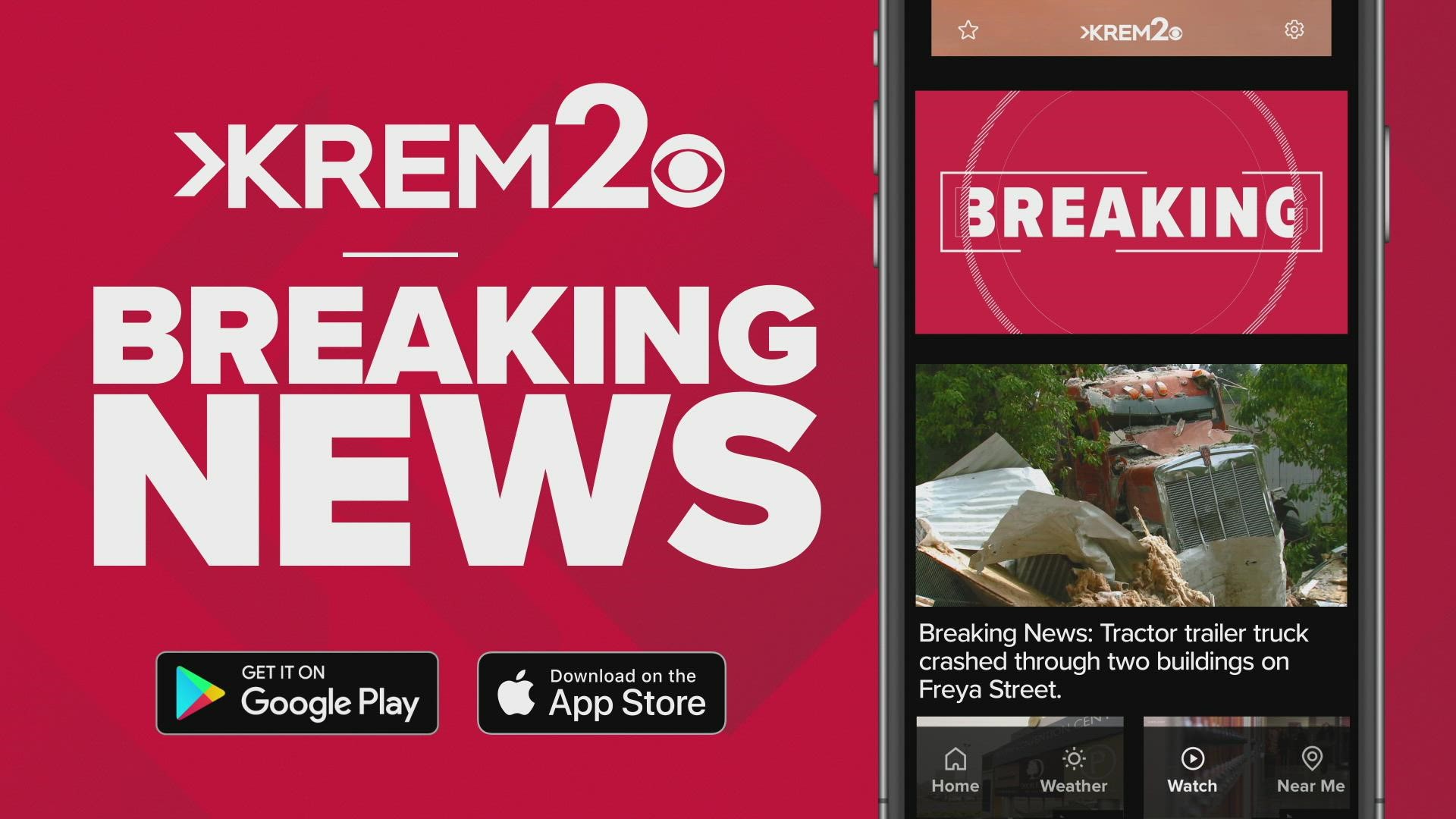COEUR D'ALENE, Idaho — The vast majority of wildfires are caused by humans.
“I feel like I’m selling iceboxes to Eskimos, the way the weather is out there right now, but believe me, no matter how good it looks in the spring — and this is about as wet as it gets this time of year, in all my years in Idaho — but believe me, we’ll always have a fire season," Gov. Brad Little said during a visit Tuesday to Coeur d'Alene.
“A big part of Idaho is enjoying our incredible outdoors," he said. "But a big part of that is everybody’s individual responsibility to be safe so we can have a healthy forest for this generation and the next."
Little and his team toured the Coeur d'Alene Interagency Fire Cache as part of a wildfire preparedness review, as reported by our news partners, the Coeur d'Alene Press.
The cache, on Industrial Loop, stocks and maintains wildland firefighting equipment and supplies for a force of up to 1,500 firefighters at one time. The cache is staffed with employees from the Idaho Department of Lands and the U.S. Forest Service. Their efforts are primarily directed toward wildland fire suppression, but also support local and interagency regional efforts during natural disasters and large projects such as prescribed burning.
"I do want to thank all the wildland firefighters and IDL employees that are here,” Little said. "This is a nice time of year, because probably the next time I’ll be here it’ll be helter-skelter, trucks rolling in and out of here, and it’ll be what looks like chaos, but it’s actually very organized chaos. That’s what these people do here every day, is prepare for chaos.”
During the tour, Little announced the new web-based Wildfire Alert System.
The Department of Lands previously relied on social media and its website to share information about wildfires with the public. Now Idahoans can visit www.idl.idaho.gov/fire-management/alerts to sign up for text or email alerts about wildfires on department-protected lands.
The new alert system supports Little's Leading Idaho initiative to enhance public safety.
When a fire under Department of Lands protection exceeds 10 acres or threatens structures, the department sends incident updates to local officials, fire agencies and the media. Under the new Wildfire Alert System, Idahoans can sign up to receive these same updates.
The system covers all 6.3 million acres in the Department of Lands' 12 forest protective districts.
"Not everyone uses social media, so it is important to provide the public with additional options to stay apprised of wildfires that may affect them," Little said. "The new Wildfire Alert System allows Idahoans, especially those who live in the wildland urban interface, a new and convenient option for obtaining timely and relevant information about wildfires."
The main Coeur d'Alene Fire Cache building was built in 1975 with more facilities constructed later. Coeur d'Alene was selected for the site after the Forest Service closed three Spokane caches around 1973.
Last year was one of the most challenging wildfire seasons for the Department of Lands Forest Protective Districts and Timber Protective Associations. Some of the statistics include:
• 413 wildfires fought by IDL's Forest Protective Districts and Timber Protective Associations
• 10 fires required incident management teams
• 88% of fires were held to less than 10 acres
• Approximately 142,000 total acres of Department of Lands-protected land burned
• 262 human-caused fires
Little said the department is better prepared for the upcoming wildfire season than ever.
Despite national firefighter leadership shortages, the agency has filled many new engine boss positions the governor authorized when he signed the agency's budget into law.
The Department of Lands has found it easier to hire and retain firefighters thanks to the new $15 an hour starting wage and 25% increase for hazard pay on the fireline, signed into law by Little. The agency also now offers firefighters paid rest and recovery because of a policy change by the Governor's Division of Human Resources.
"Our firefighters are prepared," Idaho Department of Lands director Dustin Miller said. "By the end of this week, Fire Bureau staff will have completed Wildfire Preparedness Evaluations at each of our Forest Protective Districts and Timber Protective Associations."
The moisture received this spring throughout the state makes a difference in fire conditions, easing late-winter concerns about low snowpacks. Warmer and dryer than average temperatures July through September are still expected. Larger, problematic fires aren't anticipated until late July or early August.
The Coeur d'Alene Press is a KREM 2 news partner. For more from our partners, click here.

